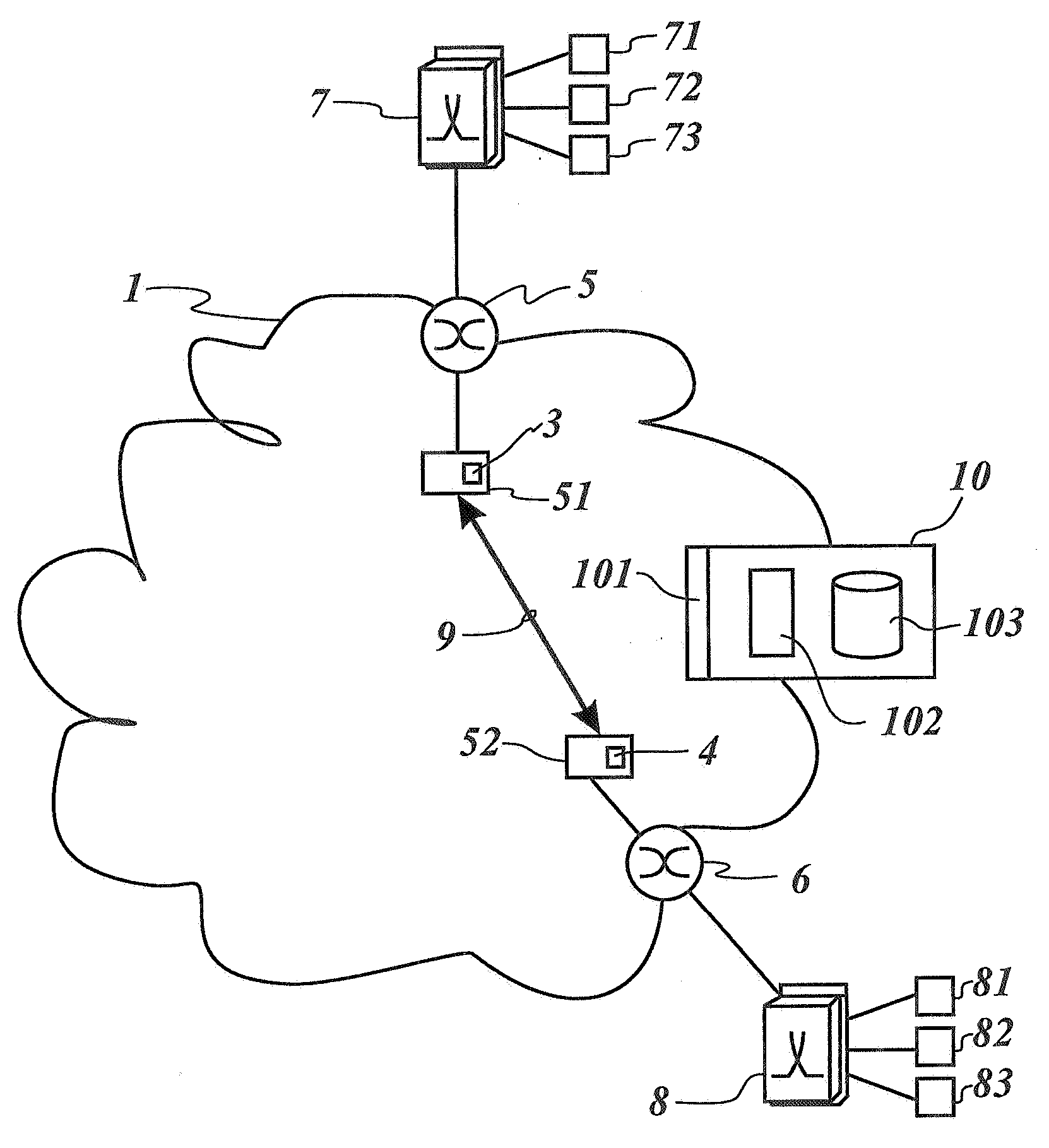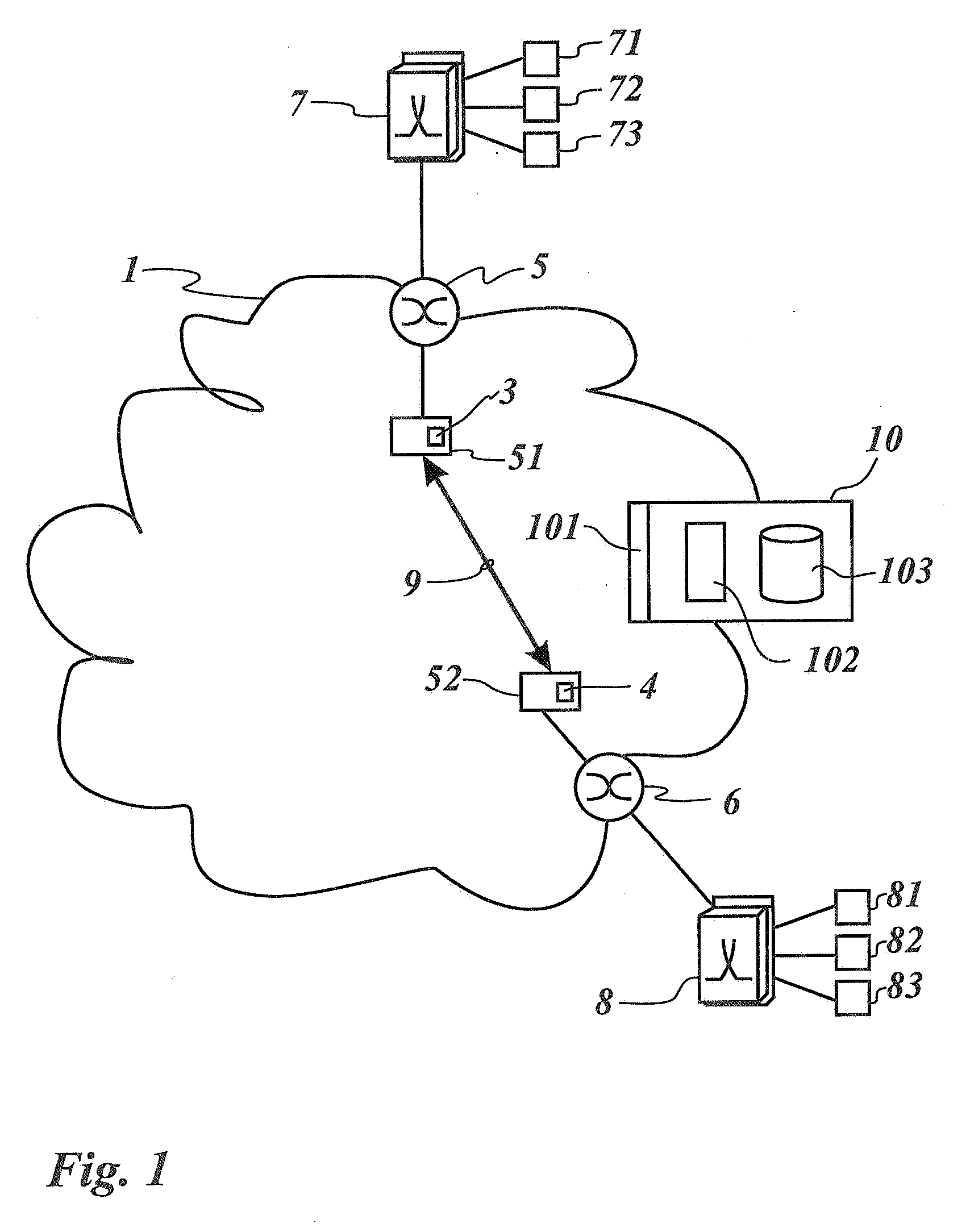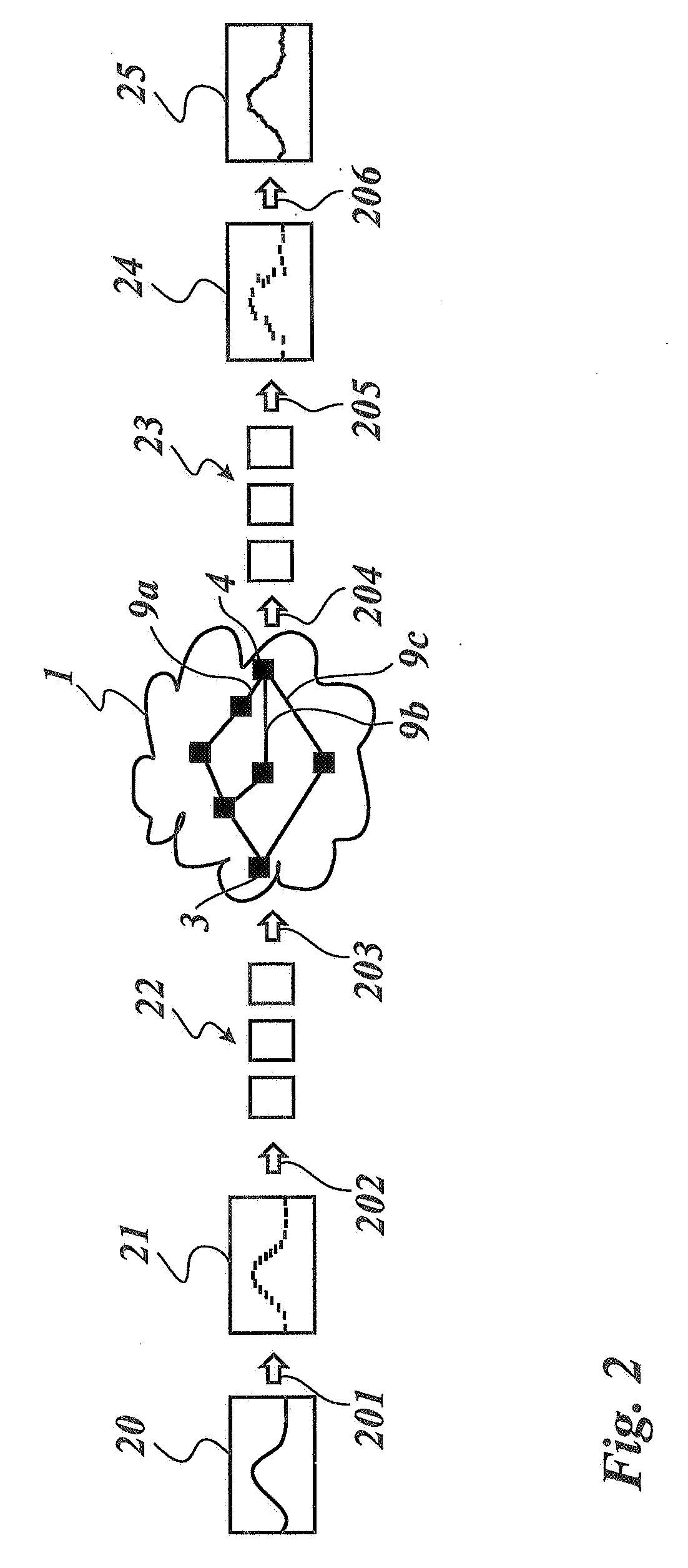Method of monitoring the quality of a realtime communication
a real-time communication and quality monitoring technology, applied in the field of computer networks, can solve the problems of loss or erroneous packets that cannot be re-transmitted, difficult to efficiently measure the contribution of a packet network to streamed media quality degradation, etc., to achieve reliable judgment, reduce the bandwidth needed for quality monitoring, and simulate voice or other media transmission characteristics
- Summary
- Abstract
- Description
- Claims
- Application Information
AI Technical Summary
Benefits of technology
Problems solved by technology
Method used
Image
Examples
Embodiment Construction
[0027]FIG. 1 shows a packet-switching network 1 operating under a packet transfer protocol such as IP, UDP, or RTP (UDP=User Datagram Protocol; RTP=Real Time Protocol). The network 1 comprises routers and switches 51, 52 for switching packets transported through the network 1, a number of test points 3, 4 located at relevant locations of the packet network 1 such as at POPs, exchanges, or switches 51, 52, and a controller 10 (POP=Point of Presence). In this description, the terms “probe” and “test point” are meant to denote the same and are used interchangeably. Each of the probes 3, 4 located at the network switches 51, 52 is connected to a gateway 5, 6 providing an interface between the packet network 1 and a local switching unit 7, 8, e.g., for switching telephony or multimedia data. The user terminals 71 to 73, 81 to 83 are connected to the local switching units 7, 8, which could also be part of a separate network.
[0028] The controller 10 comprises at least one interface module...
PUM
 Login to View More
Login to View More Abstract
Description
Claims
Application Information
 Login to View More
Login to View More - R&D
- Intellectual Property
- Life Sciences
- Materials
- Tech Scout
- Unparalleled Data Quality
- Higher Quality Content
- 60% Fewer Hallucinations
Browse by: Latest US Patents, China's latest patents, Technical Efficacy Thesaurus, Application Domain, Technology Topic, Popular Technical Reports.
© 2025 PatSnap. All rights reserved.Legal|Privacy policy|Modern Slavery Act Transparency Statement|Sitemap|About US| Contact US: help@patsnap.com



